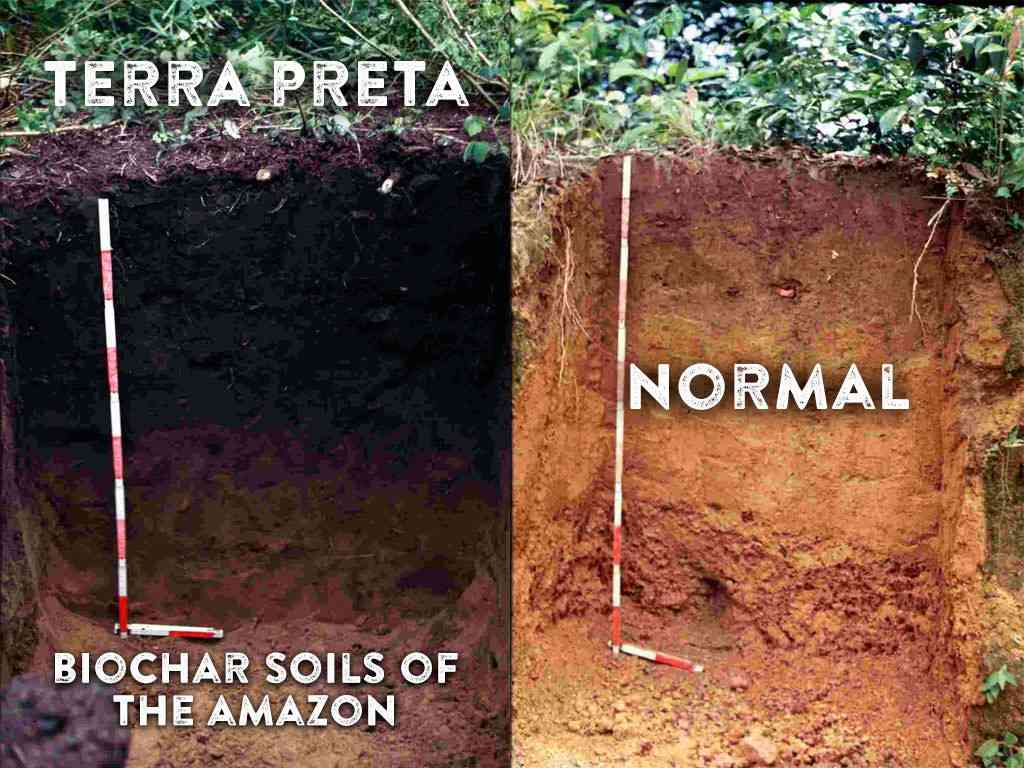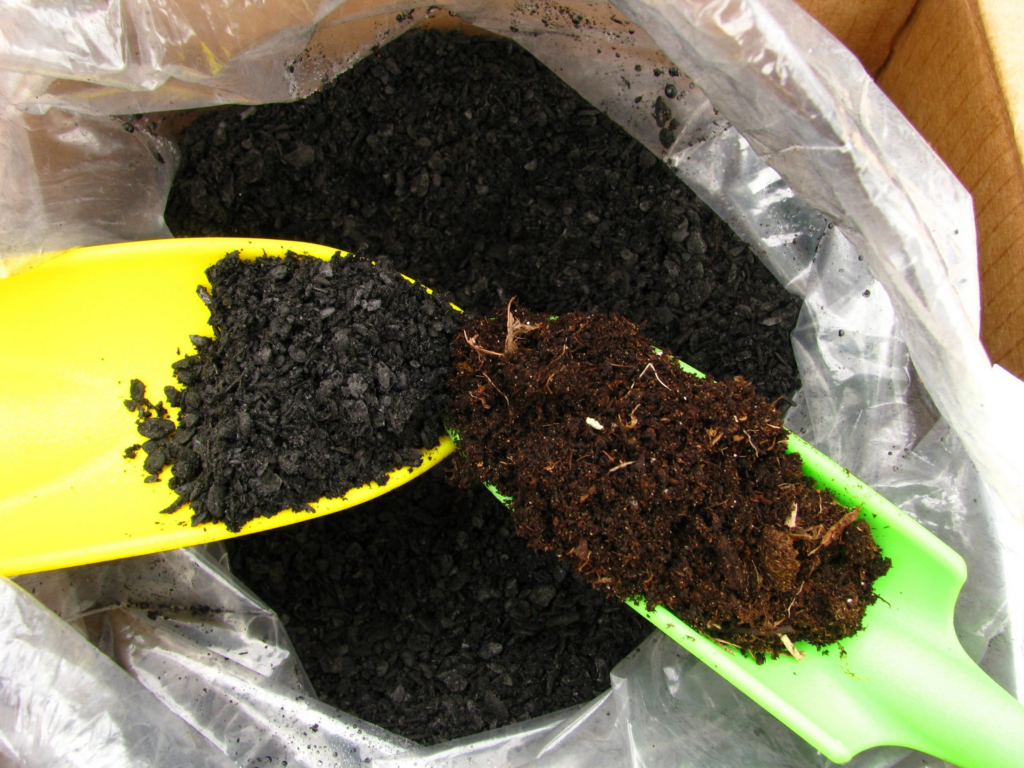
Solution ID card💡
Learn in a nutshell about this solution in its Solution ID, learn more about it in the article bellow!
What to submit a solution for Solution ID? You can do it throught here :
Article 📰
Did you know that burnt wood is an effective fertilizer? However, it also holds the carbon in the ground which is unfavourable for the environment. This Amazonian soil will surprise you! First of all, don’t run to the closest forest to put it on fire to fight climate change: this doesn’t work and would actually make things even worse! But have you ever heard of the Amazonian dark soil?
The Historical Discovery of Natural Soil Enhancement
Between 450 BCE and 950 CE (before the Spanish conquests), indigenous tribes in the Amazon Basin developed an innovative soil conservation technique that would later revolutionize our understanding of ecological gardening. They created extraordinarily fertile dark soils using charcoal, a practice that would later become known as "Terra Preta" (Black Earth) or Biochar.

This was first described by the Spanish explorer Francisco de Orellana, first European to traverse the Amazon River in the 16th century.
The Europeans, didn't understood the purpose of the indigenous tribes' practices and took it as a local superstition and tribal practices, leaving this knowledge lost for hundreds of years after indigenous tribes eradication, in libraries before science and biology could explain why this technique is a breakthrough in ecology.
Understanding Terra Preta: A Natural Soil Improvement Solution
Terra Preta represents one of the most significant discoveries in soil conservation history. This ancient technique offers a sustainable solution for:
- Reversing climate change by sequestering carbon in the sol
- Improving food production without chemical additives
- Natural soil regeneration
- Creating biodiverse self-sustaining ecological gardens

The Science Behind Soil Enhancement
Modern researchers have identified three key processes that contribute to Terra Preta's effectiveness in soil improvement:
- Strategic incorporation of wood charcoal
- Integration of organic matter and essential nutrients
- Promotion of beneficial soil microorganisms and fauna

Creating Biochar for Ecological Gardens: Essential Components

To implement this soil conservation technique, you need:
- Local forest soil or mature compost
- Wood or carbon-rich materials (including bamboo and agricultural waste)
- Animal or human manure and urine
Benefits of Biochar in Soil Conservation
Scientific research confirms multiple advantages for ecological gardening:
- Environmental Benefits:
- Reduced nitrogen leaching into groundwater
- Decreased nitrous oxide emissions
- Enhanced carbon sequestration
- Soil Improvement Benefits:
- Increased soil fertility through improved cation-exchange capacity
- Better pH balance
- Enhanced water retention
- Thriving beneficial soil microbes

Biochar can improve almost any soil, while areas with low rainfall or nutrient-poor soils will most likely see the largest impact from the addition of biochar. The Drawdown Project Institute categorized biochar as one of the best 100 solutions to reverse climate change!
Step-by-Step Guide to Making Biochar for Soil Improvement
Equipment Needed:
- 1-2 stainless barrels or a Kon Tiki
- Crusher
- Shovels
- Storage bags
Process:
- Initial Burning:
- Position barrel vertically
- Start fire in the inner bottom
- Add material progressively as wood blackens (2-4 hours)
- Avoid complete combustion (or you will have ashes, not charcoal)
- Activation Phase:
- Stop the burning process quickly by filling the barrel with water and urine mixture
- Allow proper soaking time (at least 12 hours resting in the barrel)
- Processing:
- Spread mixture on solid outside surface (better wooden planches or cement floor)
- Crush into small pieces (few centimeters max)
- Enrichment:
- Add compost and manure (chicken bedding, cows, pigs, humans, …)
- Mix in local soil (ideally a forest nearby : rich soil, with macro-organisms like worms)
- Add molasse, sugar, flour and active dry yeast to feed the micro-organisms and speed up the process (facultative, this is not needed)
- Ensure 50% charcoal ratio
- Maturation:
- Store in big bags (ideally in a dry and protected place like a barn)
- Allow microorganism development (2-4 months)
- Application:
- Spread on target soil (about 20 cm)
You can find many videos with various techniques to make the charcoal, try and see the one you prefer!
Try this ancient technic and even better, make a test on a similar soil with and without biochar to see the difference! This is free, you utilize unused waste, you don’t need to buy chemical fertilizer that will make your soil poorer in time and pollute the environment and even more, you will make it richer by helping the planet to hold carbon in the soil! A 100% win-win solution!
➕ Main advantages and limits ➖
Every solution has its own pros and limits, there isn't any solution that would resolve all humanity's problems. Each solutions in this world respond to specific needs and environment (climate, social, econimical, cultural, etc) and so it's very important to choose them properly depending on your context and find complementary solutions.
| ➕ Advantages ➕ | ➖ Limits to consider ➖ |
|---|---|
| - Carbon sequestration : locks carbon in soil for hundreds to thousands of years; - Improved water retention : reduces irrigation needs by up to 50%; - Enhanced soil fertility : increases crop yields without chemical fertilizers; - Long-lasting effects : benefits persist for centuries once established; - Waste reduction : converts agricultural waste into valuable soil amendment; | - Initial time investment : requires 2-4 months of curing before use; - Labor intensive : Production process needs constant monitoring and physical work; - Space requirements : Needs dedicated area for production and curing; - Smoke production : Burning process can create local air quality issues if not managed properly; - Quality variability : Effectiveness depends heavily on production method and source materials; |
References and Further Reading 🔎
- Lehmann, J.; Kaampf, N.; Woods, W.I.; Sombroek, W.; Kern, D.C.; Cunha, T.J.F. “Historical Ecology and Future Explorations”. p. 484. in Lehmann et al. 2007
- Tindall, R., Apffel-Marglin Frédérique, & Shearer, D. (2017). Sacred soil: biochar and the regeneration of the earth. Berkeley, CA: North Atlantic Books.
- Glaser, Bruno (27 February 2007). “Prehistorically modified soils of central Amazonia: a model for sustainable agriculture in the twenty-first century”
- Biochar International : https://biochar-international.org/soil-health/
- The Drawdown Project Institute Research : https://www.drawdown.org
Article's Information 📜
This article was proposed to you by :
Last edition of this article :

Comments & Feedbacks
As our articles are written by dedicated volunteer contributors, we kindly ask for your understanding and constructive feedback in the comments.
Any mistakes? Out-dated information? Or suggestion to this article? Please reach us here :
One response to “TERRA PRETA / BIOCHAR : Ancient Wisdom for Modern Soil Conservation and Improvement”
-
Amazing Thank You
More solutions to discover
-
GLOBAL CHRONOLOGY : An insight of our common history
Imagine a world where history unites us, not divides us!
-
TERRA PRETA / BIOCHAR : Ancient Wisdom for Modern Soil Conservation and Improvement
Terra Preta, the ancient Amazonian soil improvement technique, transforms ordinary earth into rich, fertile soil using biochar. This sustainable method not only enhances crop yields but also fights climate change through carbon sequestration, making it an invaluable tool for modern ecological gardening and natural soil conservation.
-
Effective pacific protest – Make your voice and claims heard
In the current context of climate and social protests popping all over the world, we wanted to contribute in the improvement of the social dialogue by sharing the best practices seen in history and around the world to find better solutions together, avoid harming people and any authoritarian drift.
-
Greenhouse of the Future – Grow food the whole year in your house
The fusion between technology and ecology promises tremendous upheaval. Especially in terms of housing. Creating a form of symbiosis between nature and buildings, it can finally meet the conditions of a passive house, self-sufficient, comfortable and economical!


Leave a Reply
You must be logged in to post a comment.